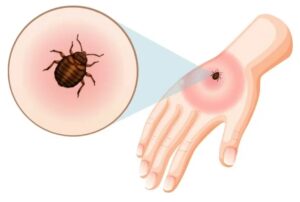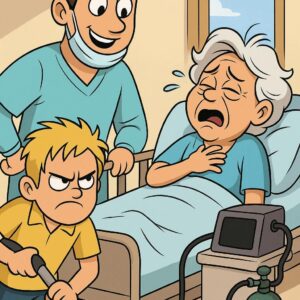Waking up to red, itchy bumps on your skin can be terrifying, especially when they show in clusters or straight lines.
In many cases, these bites are a signal of a bed bug infestation — a situation that requests immediate attention to prevent further discomfort and spreading.
What Are Bed Bugs?
Bed bugs are tiny, flat, brownish insects that live on the bl00d of humans and animals. They are most active at night and prefer stashing in areas close to where people sleep, such as mattresses, bed frames, headboards, and furniture.
Because of their small size and ability to conceal in tiny cracks and crevices, they can go ignored for a long time, allowing an infestation to deteriorate over time.
How Do Bed Bug Bites Look?
Bed bug bites typically appear as:
Small red bumps or welts.Bites often grouped together in lines or clusters.Itchiness and inflammation around the bite area.Blistering or allergic reactions in sensitive individuals.
The bites are usually pain-free at first but can become very itchy later. Scraping them can lead to secondary infections.
How Do Bed Bugs Infest Homes?
Bed bugs are expert hitchhikers. They can enter a home by clinging to:
Luggage after traveling.Clothing.Used furniture or bedding.Visitors or even through neighboring infested apartments.
Once inside, they quickly seek hiding spots and begin reproducing. A single female bed bug can lay hundreds of eggs during her lifetime, making early detection crucial.
Why Are Bed Bug Bites a Problem?
While bed bugs are not known to spread diseases, their bites can cause:
Severe itching and discomfort.Sleep disturbances.Skin infections from excessive scratching.Emotional distress and anxiety.
For people with allergies, the bites can spark more intense reactions, requesting medical treatment.
How to Spot a Bed Bug Infestation
Besides bite marks on the skin, signs of bed bugs include:
Tiny bl00d stains on sheets or pillowcases.Dark or rusty spots of bed bug excrement on mattresses and bedding.A musty odor from the bugs’ scent glands.Actual sightings of live bed bugs, especially around mattress seams or furniture cracks.How to Treat Bed Bug Bites
Treating the bites themselves involves:
Washing the bites with soap and water to prevent infection.Rubbing anti-itch creams or corticosteroid creams.Taking antihistamines to ease allergic reactions and itching.Avoiding scratching to prevent skin infections.
If bites become severely infected or if allergic reactions are intense, meeting a healthcare provider is recommended.
How to Remove Bed Bugs

Eradicating bed bugs requires thorough action:
Spot all hiding spots: Carefully inspect mattresses, box springs, bed frames, furniture, and even walls.
Wash thoroughly: Wash all bedding, curtains, and clothing in hot water and dry them on the highest dryer setting.
Vacuum regularly: Vacuum the bed, furniture, and surrounding areas frequently and get rid of the vacuum bag immediately.
Apply bed bug-proof covers: Encase mattresses and box springs with special covers that trap bugs inside.
Visit a pest control professional: Severe infestations often request professional heat treatments or chemical applications.





